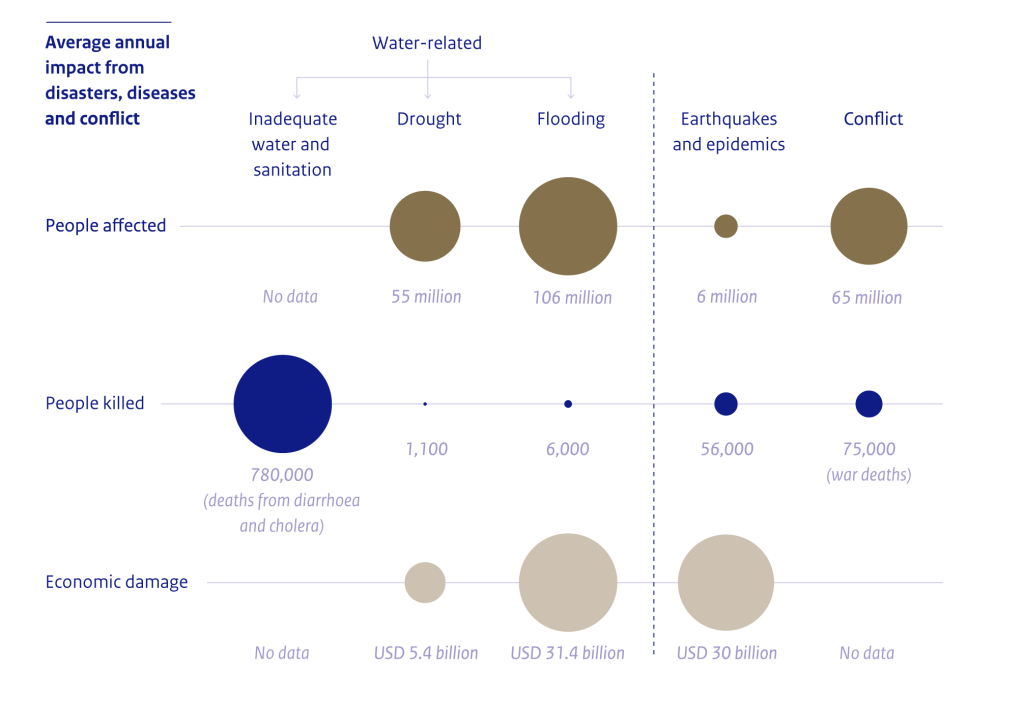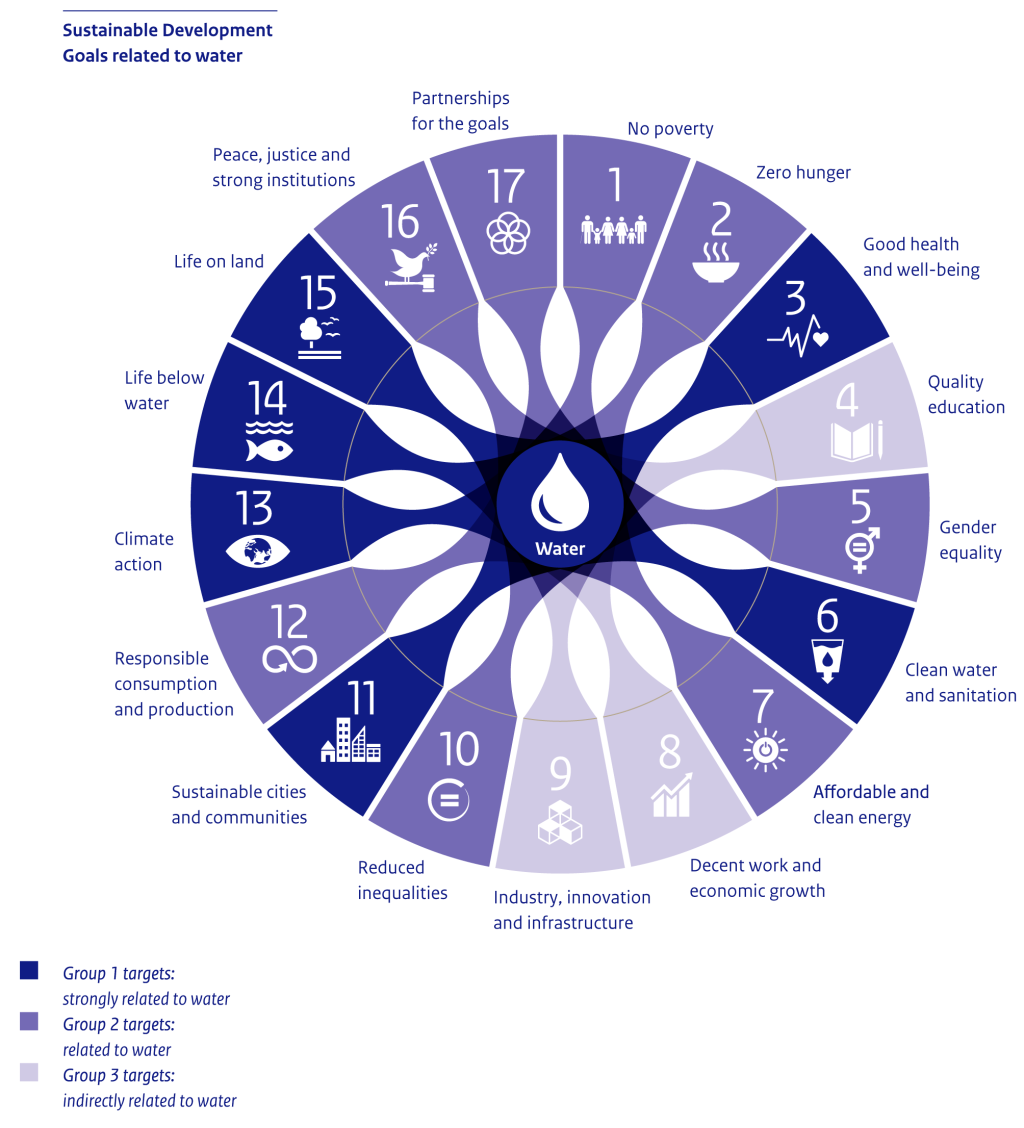Increasing water risks are a barrier to sustainable development
Where in the world will people’s lives be affected by water issues (i.e. where there is too much, too dirty or too little water) by the year 2050? What is the impact of the growing global population, further urbanisation and climate change on these water risks, the food supply and migration? PBL’s report, The geography of future water challenges, uses powerful images to provide insight into these global challenges up to 2050.
The publication shows that pressure on the production of food in already vulnerable areas will increase, if current trends were to continue. Improved water management, however, could increase agricultural production by over 40%, in parts of Sub-Saharan Africa, Central Asia and the Middle East, among other areas. Population numbers in flood-prone areas will increase, from over 1 billion to around 1.6 billion. The pollution of rivers and coastal seas is expected to increase, particularly due to the projected doubling of the amount of untreated waste water being discharged from rapidly growing cities in developing countries.
Water-related challenges
Drought, flooding and poor sanitary conditions pose the largest water-related challenges. Each year, a large share of the world’s population is particularly affected by a lack of sanitation (sewerage systems and drinking water supply systems). By 2050, over 2 billion people are expected to still lack access to adequate sanitation facilities, leading to a variety of diseases and death. Africa could become a hotspot of migration and water-related conflict, due to a combination of strong population growth, increased water shortages and low per-capita income levels. The construction of 3700 new dams for hydropower plants, together with a growing water demand, may increase tensions in transboundary river basin areas.

Water and Sustainable Development Goals
The report shows that, without improved water policy or adaptation to climate change, global sustainability goals cannot be achieved. It, thus, indicates the urgent need for large-scale, integrated approaches, emphasising the importance of collaboration between the various stakeholders to initiate and work on solutions. In this search for coherent solutions, the global hotspots are dryland regions, cities, transboundary river basins, coastal zones and deltas.

About The geography of future water challenges
This study was conducted at the request of the Dutch Ministry of Infrastructure and Water Management, the Ministry of Foreign Affairs, and the Ministry of Economic Affairs and Climate.
In The geography of future water challenges, PBL presents an outline of water-related challenges, in collaboration with Deltares, Wageningen University and Research, IHE Delft Institute for Water Education, Clingendael, VU University Amsterdam, Utrecht University and Blueland. Water issues are projected to increase, from the perspective of a ‘business-as-usual’ scenario, but many integrated solutions are possible to divert this trend towards a sustainable and climate-resilient world.